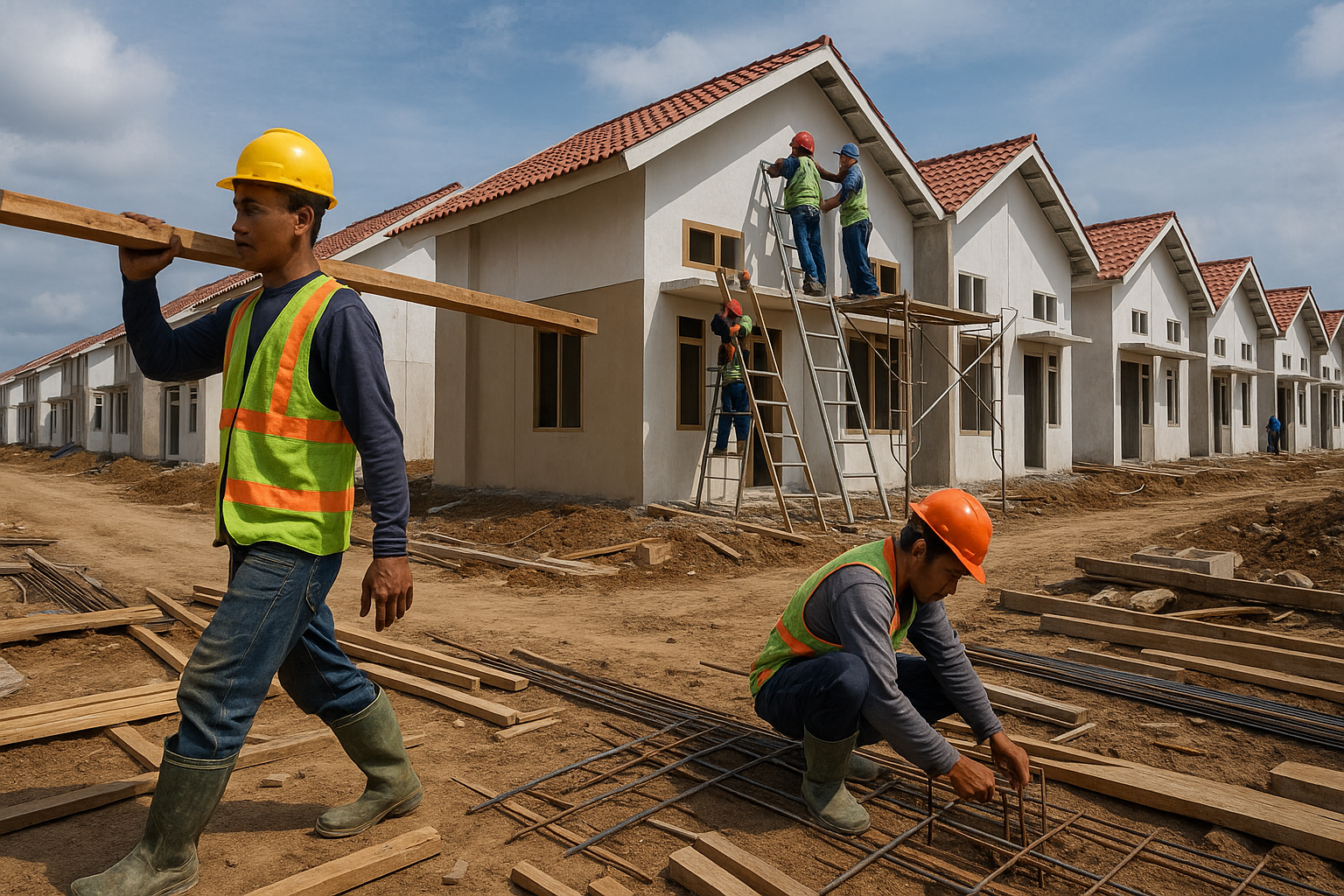Indonesia’s 3 Million Homes Vision: A Bold Strategy for Jobs, Equity, and Development
The World Bank’s June 2025 report positions housing as a cornerstone of Indonesia’s economic transformation, urging a shift from quantity to quality in homebuilding to drive inclusive growth. With strategic investments and reforms, the country could generate millions of jobs and elevate living standards on its path to “Golden Indonesia 2045.”

Indonesia’s June 2025 Economic Prospects report from the World Bank lays out a compelling vision for economic resilience and social equity through a bold housing-centered development strategy. At the heart of this roadmap is President Prabowo’s pledge to deliver 3 million homes annually, forming a central pillar of Indonesia’s long-term vision for a “Golden Indonesia 2045.” Rather than viewing housing as a standalone infrastructure goal, the report champions it as a powerful lever for inclusive growth, job creation, and human capital development.
The housing sector already contributes 10% to GDP, 7% to employment, and 8% to tax revenue, yet the benefits it can deliver remain underleveraged. A people-first housing approach, combining quality improvement, infrastructure upgrades, and urban integration, is essential to unlocking prosperity. The World Bank proposes a two-pillar strategy to maximize the social and economic returns of this housing drive.
A Stable Yet Sluggish Economy Faces Structural Strains
Despite worsening global conditions, Indonesia's economy has shown resilience, growing at 4.9% year-on-year in Q1 2025. However, this marks a slowdown compared to previous post-pandemic quarters. Investment dropped amid domestic policy uncertainty and global volatility, while public consumption contracted due to budget efficiency measures. Export frontloading helped temporarily balance the current account, but declining commodity prices have worsened Indonesia’s terms of trade.
Monetary policy has shifted to support growth. Bank Indonesia (BI) cut rates twice and injected liquidity to ease credit constraints. Inflation remains subdued at 1.6%, driven by strong domestic food production and low energy costs. Yet challenges persist: middle-class consumption is stagnating, and the labor market continues to funnel workers into low-productivity sectors. From 2019 to 2024, the middle class saw real consumption growth of just 1.3% annually, far below the poorest and richest income groups.
Weak Job Creation and Growing Inequality
Indonesia’s labor market reveals deeper structural issues. While labor force participation and employment have grown, 52% of new jobs are in low-value sectors like retail and agriculture. Nearly 60% of all workers remain in informal employment. Wage growth has stagnated, and layoffs in key manufacturing industries, textiles, footwear, and electronics, have surged, especially in industrial hubs like Central Java and Jakarta.
Meanwhile, households, especially the middle class, are cutting back on consumption and shifting their savings to gold, property, and other “safe-haven” assets. Credit growth is sluggish. Despite a stable and well-capitalized banking sector, private lending remains low at 35% of GDP, far below the 124% average in East Asia Pacific. This reflects muted demand and a private sector wary of economic uncertainty.
A Housing-Led Strategy for Inclusive Growth
At the core of the report is the case for housing as a platform for national transformation. The World Bank estimates that of the 32.3 million housing units needed, 83% are for upgrading substandard homes, not building new ones. Yet the government currently allocates nearly 89% of its housing budget to new construction. Redirecting funding toward better housing, resilient infrastructure, and livable urban environments could dramatically improve health, education, and productivity outcomes, especially for children.
Urban areas, where 76% of Indonesia’s middle class resides, are the focus. However, affordability is a growing barrier: in Jakarta and surrounding areas, housing costs are pushing people out of cities, reversing typical urbanization trends. With smart reforms and investment in transit, services, and compact housing, urban centers can again become magnets for talent and economic opportunity.
To meet the 3-million-unit target, the government must mobilize at least US$3.8 billion in public investment each year. This could catalyze US$2.8 billion in private capital and generate over 2.3 million jobs annually. Importantly, housing also aligns with other social goals, such as the Free Nutritious Meal program, by improving household health and reducing vulnerability to disasters.
Reforms, Institutions, and Danantara: Making It Work
The second pillar of the strategy emphasizes the need for policy and institutional reform. The report calls for modernizing public housing finance entities like BP TAPERA and BTN, expanding mortgage access for low-income families, and enacting land-use and permitting reforms. A revamped regulatory environment can make it easier for the private sector to invest in housing and infrastructure.
At the center of this effort is Danantara, Indonesia’s new sovereign wealth fund. Now managing assets equivalent to 64% of GDP, Danantara is tasked with investing in national priorities, including housing, energy, and downstream industries. Yet its success depends on strong governance. The report warns that if transparency and accountability are lacking, Danantara could crowd out private capital or become a fiscal risk.
With a clear strategy, targeted reforms, and inclusive investments, Indonesia can convert housing into a catalyst for shared prosperity. A people-first housing approach, rooted in better homes, stronger cities, and empowered citizens, offers a pathway to resilient, equitable, and sustainable growth.
- FIRST PUBLISHED IN:
- Devdiscourse
ALSO READ
Tamil Nadu and World Bank Forge Strong Ties for Progressive Development
India's Economic Future Amid Global Uncertainties: A World Bank Perspective
Global Economic Growth Stalled by Trade Wars, Says World Bank
Citing trade wars, World Bank sharply downgrades global economic growth forecast for this year, reports AP.
World Bank Slashes Global Growth Forecast Amid Tariff Uncertainty










